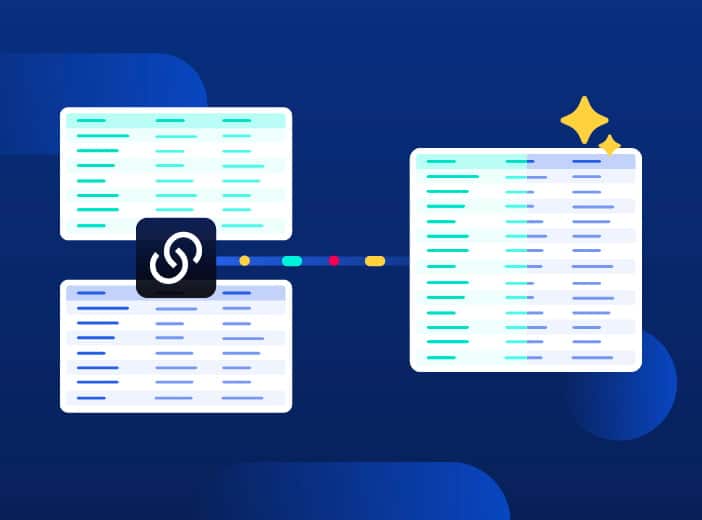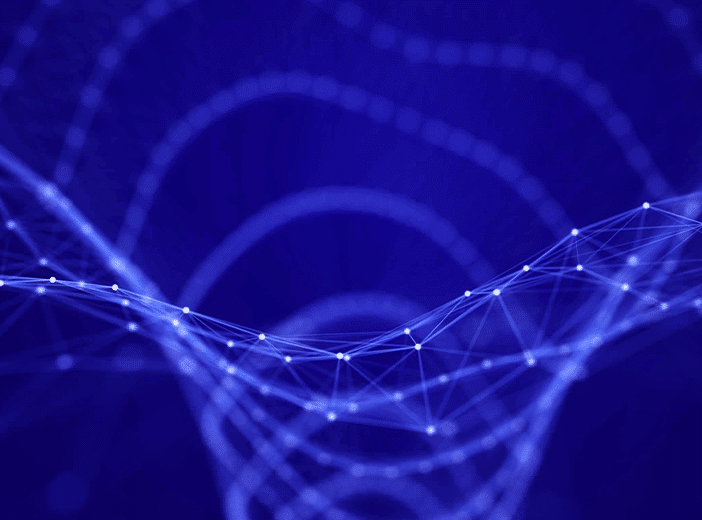Data interoperability, an essential component of becoming a data-centric business
How can you ensure that your data can be reused by everyone, regardless of their skills or the tools they use? This blog explains how to put in place a framework that enables you to offer interoperable data to all your stakeholders.

Today, organizations collect data from an ever-increasing variety of sources, and then share it with a wide range of employees, all of whom have differing technical skills. Guaranteeing data interoperability is critical to encouraging this data reuse inside and outside your organization.
How can you ensure that your data can be reused by everyone, regardless of their skills or the tools they use? This blog explains how to put in place a framework that enables you to offer interoperable data to all your stakeholders.
What is data interoperability?
An organization’s data shouldn’t just be shared with a handful of in-house data experts. Instead, to maximize value, information must also be shared with employees, customers, partners and other stakeholders. However, not everyone uses the same software tools, or has the same skills.
What’s more, the metadata used to describe your datasets can vary widely. If this information is not standardized, finding the right data will quickly become difficult and complicated. That means creating a common vocabulary for understanding data across your company and ecosystem is essential.
This is why data interoperability is a necessity. It covers the ability to connect different data and/or tools. The aim is to make data readable, understandable and reusable for everyone. And this is true regardless of the “data” skills of employees or the tools used. Ultimately, data interoperability facilitates greater accessibility for all your stakeholders.
Why is interoperability essential?
Enhanced collaboration
Within organizations, departments are often organized in silos, using different tools, and not sharing data with the rest of the organization. Overcoming this challenge is hard, and becomes even more complicated when it comes to sharing data externally.
By putting rules in place to guarantee interoperability, all stakeholders can confidently access and reuse data.
Essentially large-scale information sharing is only possible if data is interoperable. There can be no democratization of data without interoperability.
Data quality is preserved
Data is widely recognized as a lever for improving efficiency. However, to achieve this, its quality must be guaranteed.
Good data interoperability depends on clear data governance. Defining a data governance framework to describe and manage all data processes helps to improve data quality, security, compliance, reliability and relevance.
Interoperability also makes it easier to enrich your data, whether with information from third-party companies or simply by using data from other departments within the organization. If internal datasets are cross-referenced with other relevant information, organizations benefit from a more detailed picture that enables them to make better informed decisions.
It fosters the creation of data-centric practices within organizations
Users have increasing demands when it comes to the data they consume. This requires a change in mindset and working methods. Data must be considered as a product, managed in a way that enables it to be easily used to create new uses. Interoperability plays a major role in this process.
When data is seamlessly connected, the data experience is enhanced. This encourages the reuse of data to create value on a large scale.
How do you make your data interoperable?
Data is interoperable if it can be cross-referenced with other information and used by different systems. To achieve this, several aspects need to be taken into account including the semantic framework and the technology stack.
Semantic data interoperability
Ensuring the semantic interoperability of your data through a common language is essential to guarantee that your data projects are coherent and aligned. This requires a focus on multiple areas::
- Metadata: used to describe data, metadata must be filled in according to common rules to make it easier to find and understand. There are several official metadata formats (DCAT, DCAT-AP and INSPIRE) to adopt and follow.
- Data schemas: these are the fields used to build the dataset. It is important to follow a defined order that is communicated to all data owners, so as to quickly identify data that can then be cross-referenced. It is also advisable to associate codes with each field to make it easier to confidently manipulate your data.
- Documentation: this brings together the essential information to understand and share your data.
- License: the rules of the license you adopt determine how your data can be reused. It is therefore imperative to choose the right license that meets your needs and to inform users of its terms.
To guarantee interoperability between data, it is essential to put in place a comprehensive and clear data governance program. This framework and rules are designed to make it easy to connect your datasets, while guaranteeing their quality, reliability and security.
Technical data interoperability
Organizations often use multiple tools to store, analyze, explore or share data. Their tech stacks are made up of different solutions, often from different vendors, that need to be interoperable with each other. What’s more, data comes from an increasing variety of sources such as Internet of Things (IoT) sensors, external data, or production/business systems. It is therefore essential to establish a process to standardize data for reuse.
In addition to data management tools, organizations also use business applications that rely on data on a daily basis. Information must therefore also be interoperable with these solutions.
Overall, organizations must be able to guarantee data interoperability with the full range of tools used internally, and increasingly externally by partners and/or customers.
The best solution to enable this technical interoperability is to transform data into open, standard or widely-used file formats (such as CSV, or Json). It is not advisable to use proprietary formats, such as XLS, which do not allow data integrity to be maintained when moving data between different tools..
By ensuring your data can be accessed and understood by a full range of tools, you simplify the circulation of data and can guarantee data quality. This is a prerequisite if data is to be shared and reused by everyone, regardless of the tools they want to use.
Interoperability means that data can be understood by different IT systems regardless of the third-party services used.
How can you guarantee long-term data interoperability?
To guarantee the semantic and technical interoperability of your data, you need to establish a common framework for the whole organization by taking these three key actions:
Appoint a data governance officer
Strong data governance is essential for multiple reasons. It not only extends the use of your data and maximizes its value to your organization and ecosystem, but also helps to protect it and to ensure regulatory compliance.
The elements that guarantee the technical and semantic interoperability of data are determined by the governance strategy. That’s why it’s essential to appoint a person in charge of developing and maintaining this strategy. This may be a Chief Data Officer (CDO), a Data Director, or a Data Administrator.
Automate data sharing
To optimize interoperability, make it possible for users to automate data retrieval through ready-to-use APIs.
Opendatasoft users benefit from the fact that our platform automatically generates APIs for each dataset you create. Anyone wishing to reuse a particular dataset can simply access Opendatasoft’s API console to configure the relevant API and select the most appropriate format for it.
This not only avoids errors when updating data but also ensures data is continuously updated, guaranteeing its quality and relevance.
Analyze how your data is used
If, even after implementing a governance strategy and interoperability standards, you don’t see your data usage increase, you can analyze how users consume your data to better understand their needs.
Opendatasoft provides its customers with a unique data lineage functionality. This involves monitoring all the reuses of the data from your portal.
You can view data origin and status (valid or invalid), relations between datasets (federation or join) and objects used (including pages, datasets, maps, and geographic processors).
You can then use this analysis to take appropriate action:
- If a dataset is heavily used: publish more data and update it regularly
- If a dataset is little used or not used at all: there may be interoperability problems, so investigate to improve performance
- If there are invalid relationships on the portal: this jeopardizes user confidence in your data. Correct them as soon as possible to ensure that data is always accurate across all of your data and application ecosystem.
Opendatasoft, the data experience layer that integrates with your complete tech stack
The Opendatasoft platform integrates with the diverse range of tools that make up an organization’s tech stack guaranteeing optimum interoperability. Examples of customer successes include:
- Managers at Rouen Metropole can distribute geographic data on their open data portal with just a few clicks thanks to the interoperability between Opendatasoft and the Isogeo geographical data platform.
- Schneider Electric can instantly interface its Opendatasoft platform with its cloud and data lakehouse solutions, including Microsoft Azure and Databricks, to rapidly feed Exchange, its data marketplace.
- Lamie Mutuelle has made Opendatasoft the cornerstone of its data management strategy. All data, whether collected internally or externally by partner organizations, is centralized on the platform and then shared to feed the company’s CRM and other internal systems via APIs.
Interoperability is essential to successfully sharing your data and unlocking its full value across your ecosystems. That makes it vital to put in place a strong framework to drive interoperability. This should combine defined and clear governance rules with staff training, monitoring and dedicated employees to run the program both strategically and tactically.



